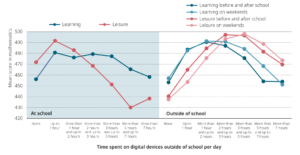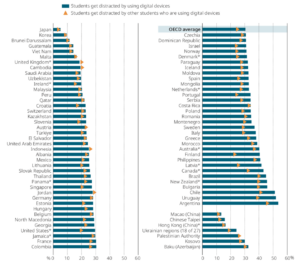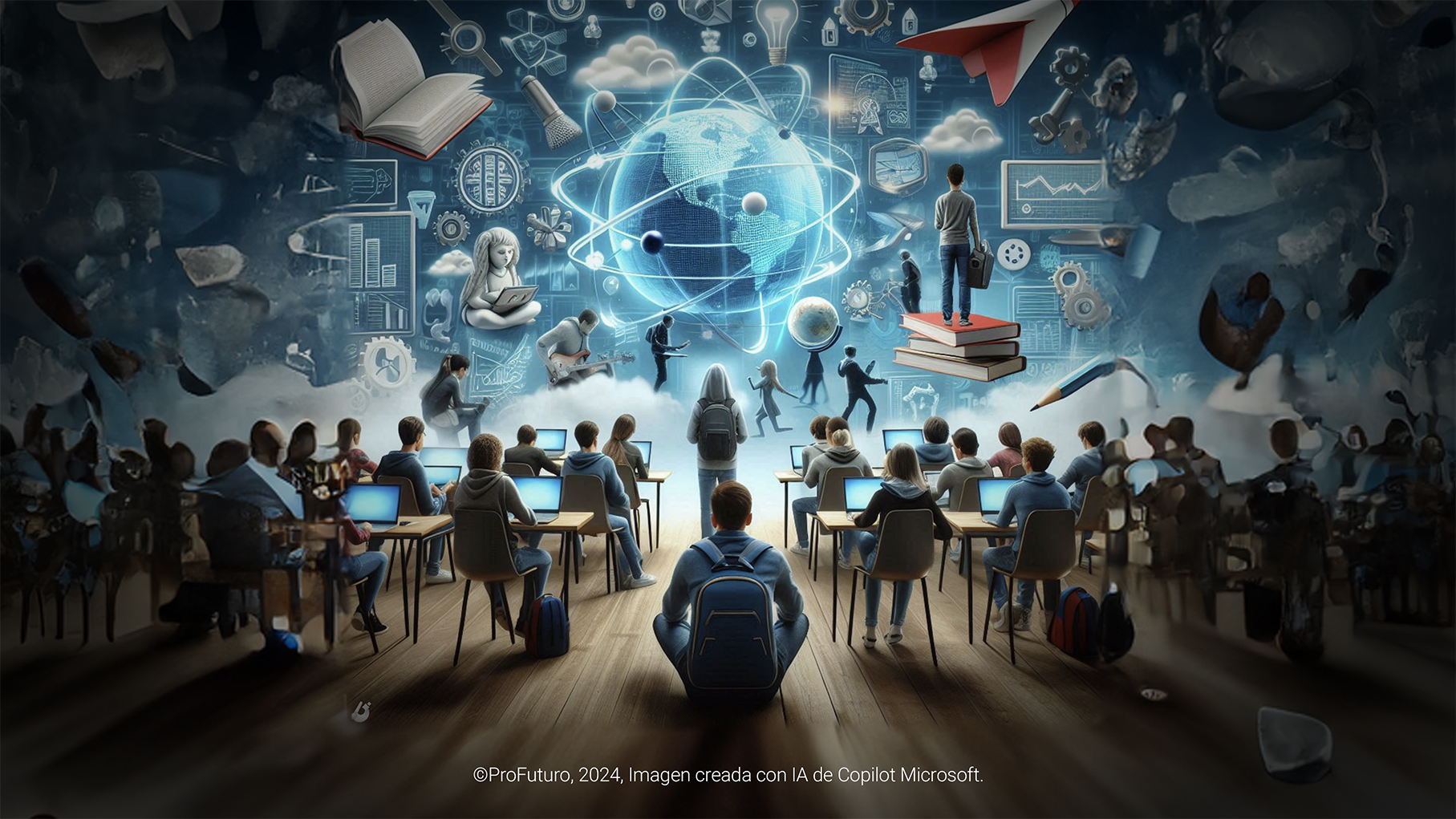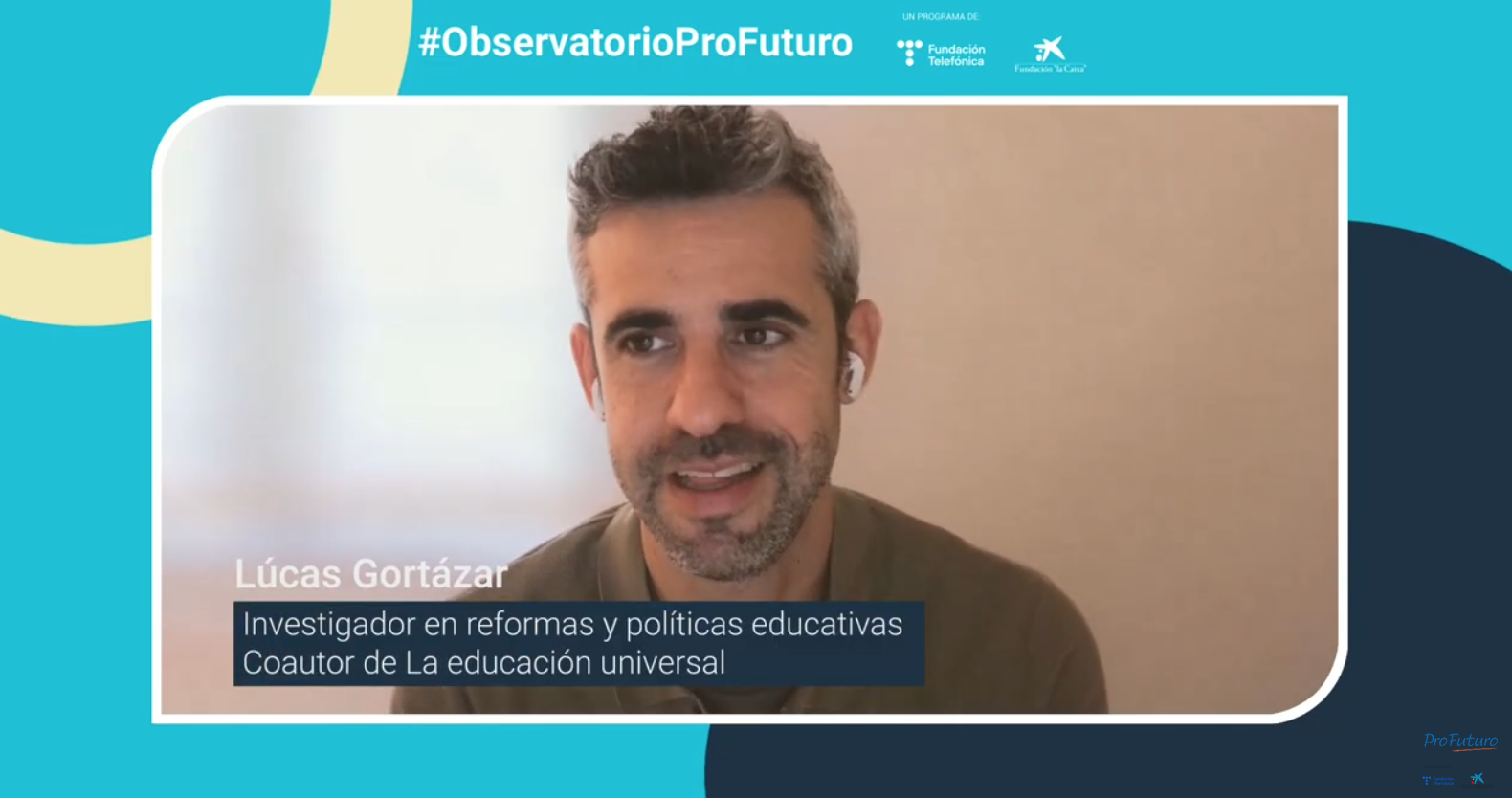Digital devices are already deeply integrated into the lives of our children and adolescents. The so-called digital natives (most of whom are actually digital orphans facing the use of new technologies without adult guidance or support) are accessing technology at increasingly younger ages and using it in almost every aspect of their lives as an extension of their own bodies. School is no exception. Naturally, controversy is rife. Digital devices in classrooms, yes or no? This article examines what the OECD says on the matter, based on the results of the latest edition of the well-known PISA report, which for the first time asked students about the use of digital devices in classrooms and analysed the consequences.
Moderate and Regulated Use of Digital Devices in Schools Is Associated with Better Learning Outcomes
The findings of PISA 2022 reveal that 15-year-old students who use digital devices moderately for learning in school tend to perform better and report a greater sense of belonging in school. Students who spent one to five hours daily learning on digital devices achieved better learning outcomes than those who did not use them.
PISA data revealed another interesting trend: students who use their devices recreationally for up to an hour a day achieve better results than those who do not. Beyond one hour of recreational use, educational outcomes begin to decline. On average, in OECD countries, students who spent up to an hour a day on leisure activities on digital devices in school scored 49 points higher in mathematics than their peers who spent five to seven hours daily on their screens, even after adjusting for the socioeconomic profiles of students and schools.

Source: OECD, 2023. Managing Screen Time: How to protect and Equip Students against distraction.
The findings of PISA 2022 reveal that 15-year-old students who use digital devices moderately for learning in school tend to perform better and report a greater sense of belonging in school.
A similar pattern is observed outside of school: moderate use of digital devices for learning (up to three hours per day on weekends) is associated with better performance and a greater sense of belonging in school, while spending up to five hours per day on weekends on devices for leisure also has a positive correlation with performance. In contrast, students who spend more than three hours report a lower sense of belonging in school.

Source: OECD, 2023. Students, digital devices, and success.
These data suggest clear benefits for moderate and regulated use of digital devices in schools and for the intentional integration of educational technology into the school curriculum.
Digital Devices and Distractions
The downside of these devices is distraction. Almost one in three students, on average in OECD countries, reported being distracted by digital devices in most or all of their mathematics classes. Closer examination reveals that the highest percentage is in Argentina and Uruguay, where more than 50% of students admit to being distracted, and the lowest is in Japan, where only 5% of students get distracted.
Another significant statistic is the percentage of students who reported that their attention was diverted due to other students’ use of phones, tablets, or laptops in at least some mathematics classes. Here, the highest percentages also belong to Argentina and Uruguay (39% and 41%, respectively) and the lowest to Korea and Japan (10% and 5%).
As expected, this “digital distraction” seems to have a tangible association with learning outcomes, according to PISA: students who report being distracted by their peers’ use of digital devices in some, most, or all mathematics classes score significantly lower in mathematics tests, equivalent to three-quarters of a year of education.
These data highlight how the use of digital devices in classrooms has become a double-edged sword. On the one hand, these devices can broaden access to learning resources for the most vulnerable students. On the other hand, the devices and their many “temptations” distract students’ attention to non-academic activities, which can affect their concentration and, consequently, their academic performance.
Almost one in three students, on average in OECD countries, reported being distracted by digital devices in most or all of their mathematics classes.
How Matters More Than How Much
It is also important to clarify that not all digital devices contribute equally to distraction. Smartphones, with their constant notifications, apps, and alerts, are much more “guilty” than other digital devices like, for example, a tablet loaded with educational software. According to PISA, this supports other emerging research indicating that what children consume and do in digital environments is as important as the amount of time they spend using the devices.
As reflected in the PISA data, a critical aspect that should not be overlooked is the context in which children use screens. For example, the nature of the content being viewed and interactions during screen time are likely important factors. Some studies have shown a positive correlation between children’s literacy skills and the time spent watching screens with their families. A negative link was observed when children watched screens alone, while a positive association emerged when parents watched screens together with their children. This underscores the potential value of the quality of interactions during screen time.
This is supported by other OECD research on the impact of technology on children aged two to six years. According to the OECD report “Empowering Young Children in the Digital Era,” screen time can be positive if supervised and focused on educational content. Digital technologies can potentially enrich learning activities through interactive features and lay the foundation for crucial skills later in life, such as fostering interest in fields like artificial intelligence, programming, and engineering.
To Ban or Not to Ban?
Given the situation, it is no surprise that the debate is ongoing. PISA warns: while banning smartphones in schools can help mitigate distractions, its effectiveness greatly depends on how the policy is implemented. Data shows that even in schools where phones are banned, 29% of students said they use them several times a day.
Moreover, caution must be taken regarding the unintended effects of such bans. In schools with phone bans in Canada, Chile, Indonesia, Korea, New Zealand, Peru, the Philippines, Slovakia, and Chinese Taipei, students were less likely to disable social media and app notifications on their devices when going to sleep. The data suggests that even in schools with bans, students may struggle to adopt responsible behaviour regarding phone use.
Therefore, PISA advocates for the intentional integration of digital technologies in the educational environment. This includes regulating device use, training teachers to effectively handle technology in their teaching methods, and integrating media and digital literacy into educational curricula.
Recommended Actions for Schools
At the Observatory, we want to contribute to the debate by recommending some actions and measures that can maximise the benefits of digital technologies while mitigating the associated risks.
- Promote Digital Literacy: Include digital literacy in school curricula so that students learn to use technologies responsibly and critically, evaluating sources and verifying information.
- Train Teachers: Provide ongoing training for teachers to develop digital competencies and effectively integrate technologies into their teaching methods.
- Strictly Regulate Mobile Device Use in Schools: Establish clear guidelines on the use of digital devices in schools, with specific instructions on how and under what circumstances these devices can be used. These policies should be clearly communicated to students, parents, and school staff and consistently implemented.
- Encourage Healthy Habits: Promote physical activities and other healthy habits, encouraging students to participate in sports and other extracurricular activities that do not involve digital devices.
- Designate Technology-Free Zones: Mark certain times and places as technology-free zones to promote direct interaction between students.
- Monitor and Evaluate: Implement systems to monitor the impact of digital technologies on academic performance and student well-being, adjusting policies as necessary.






